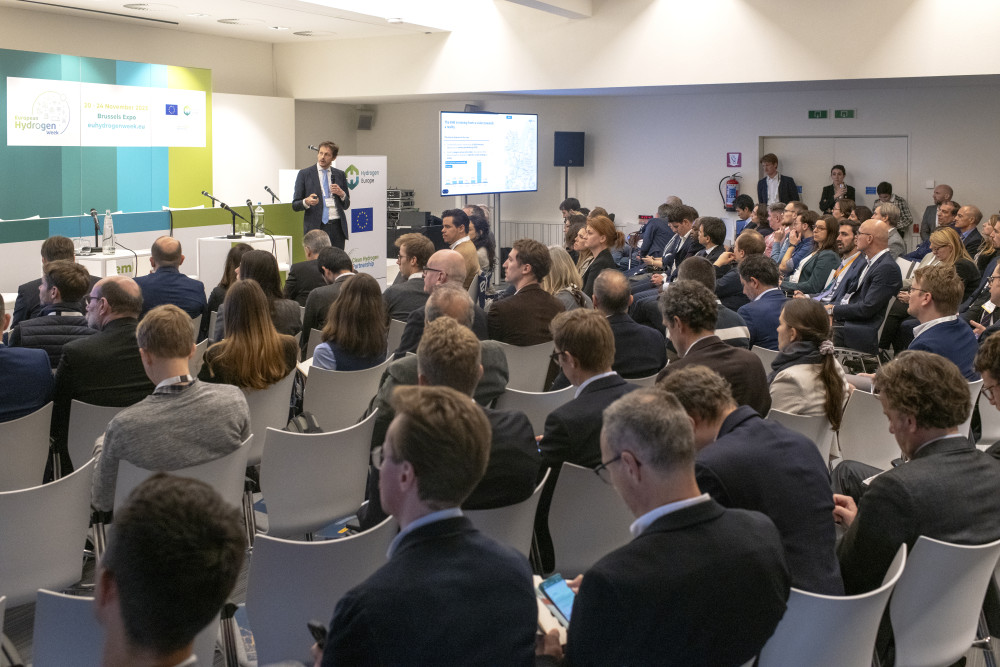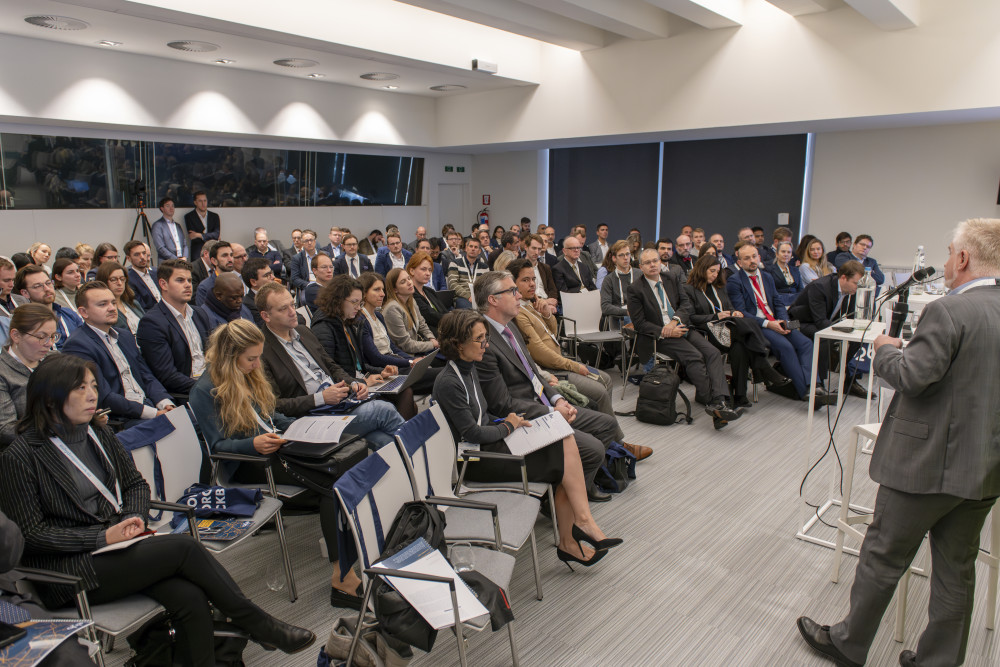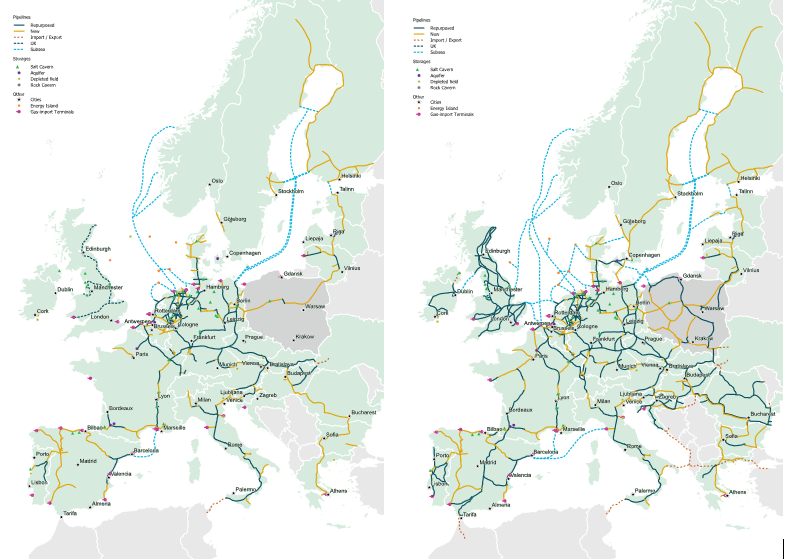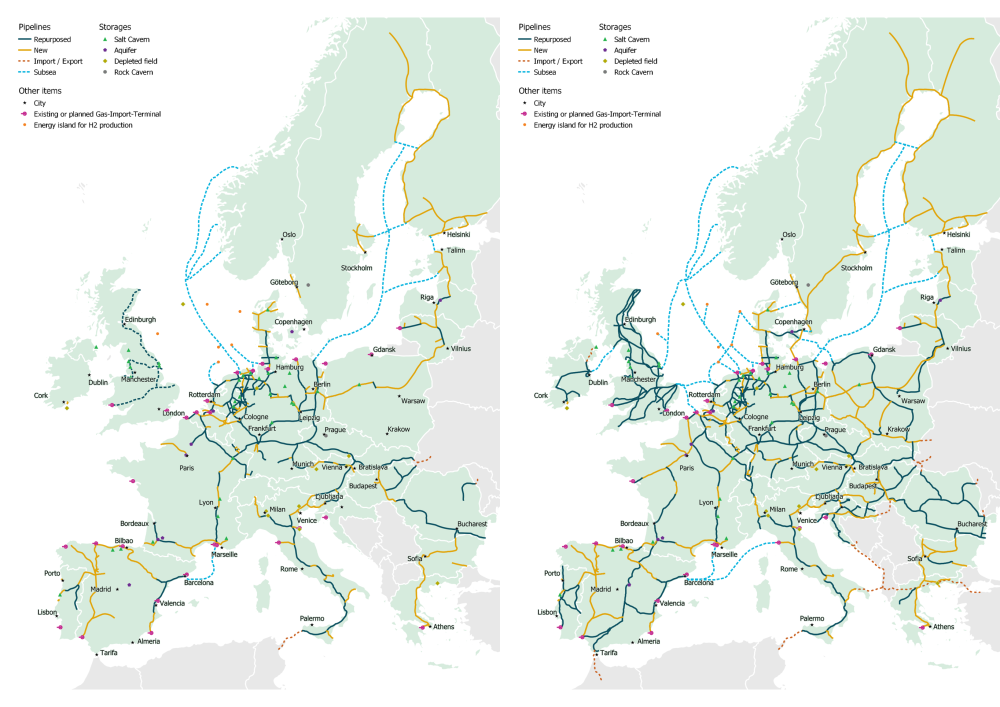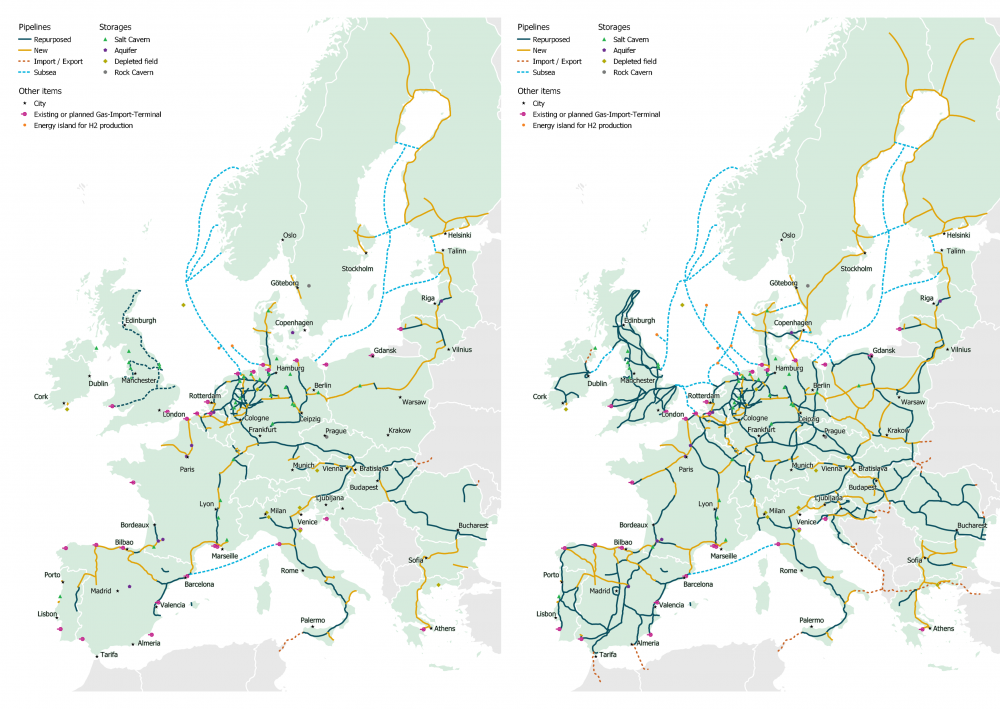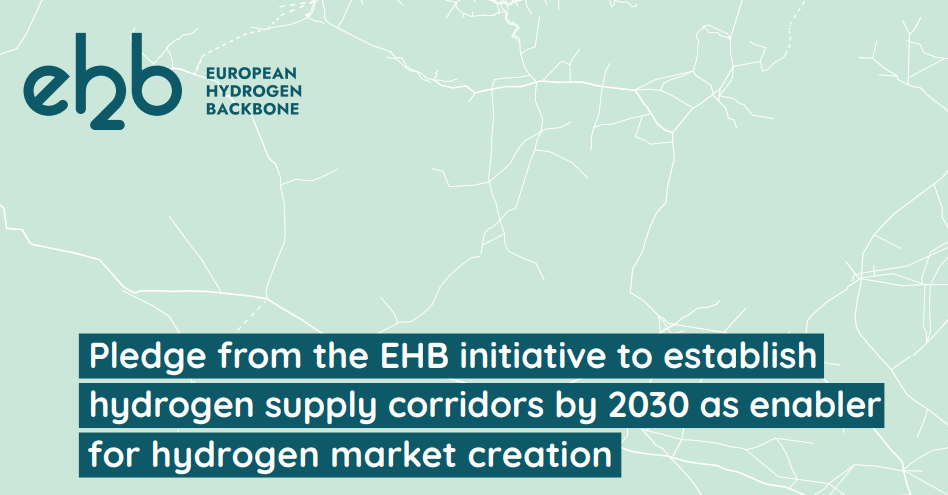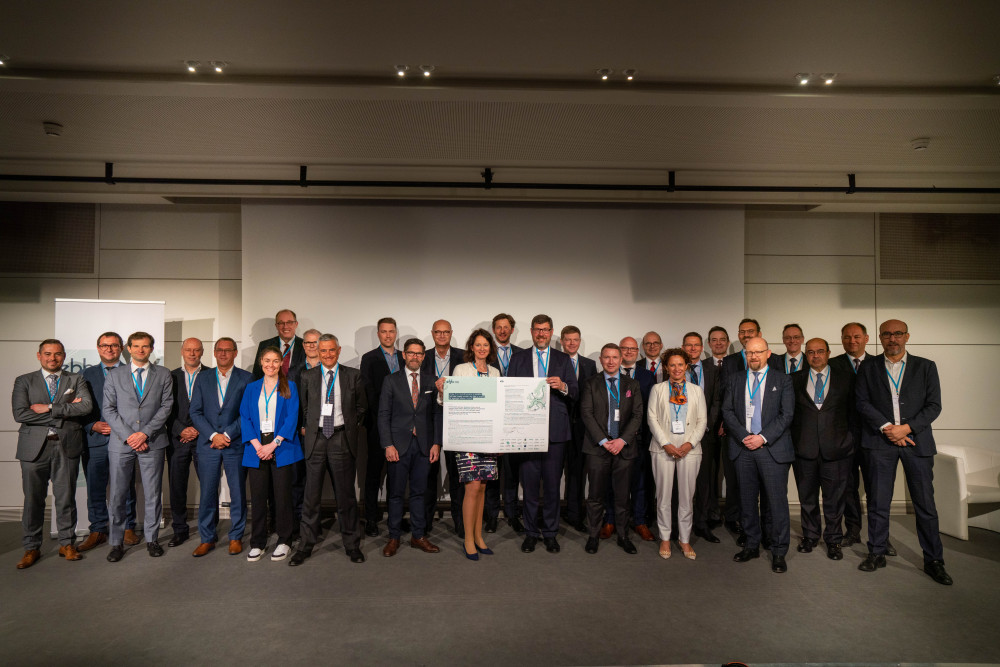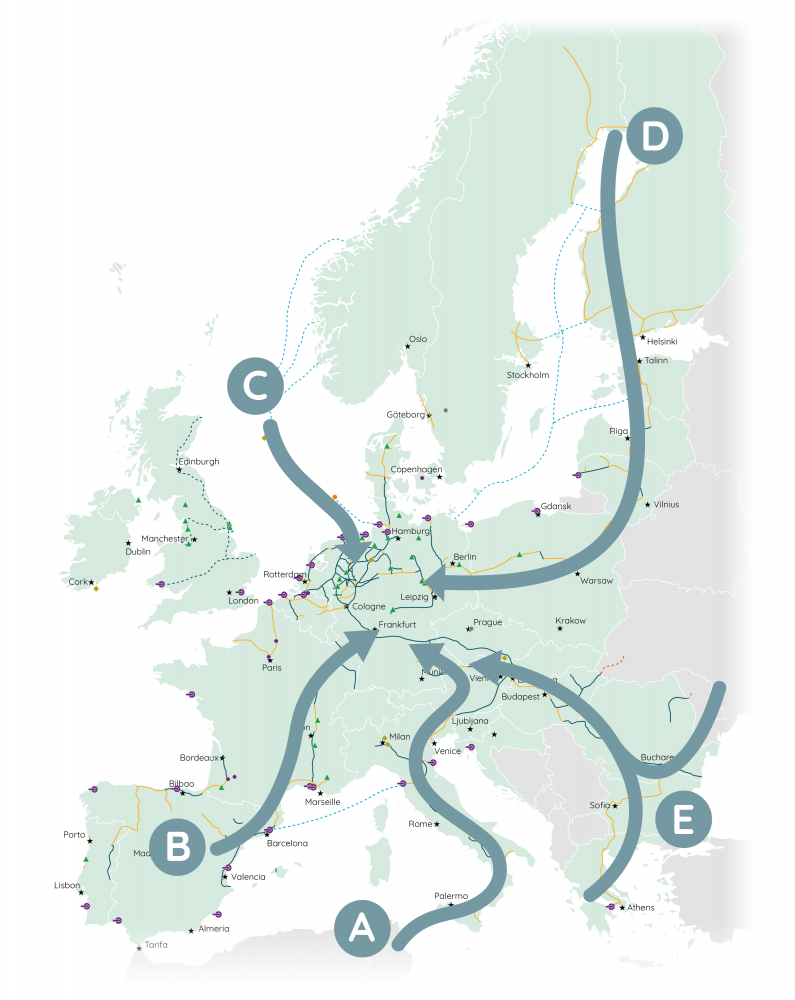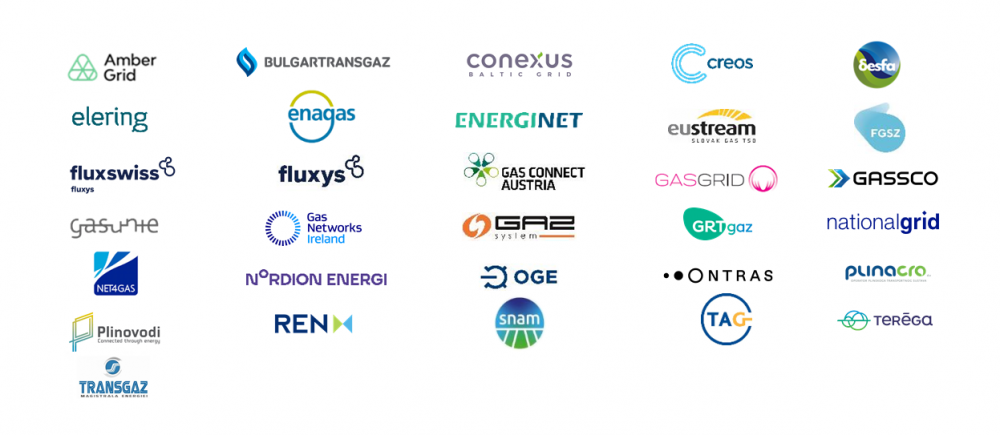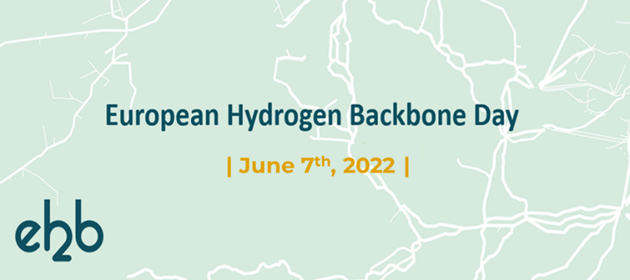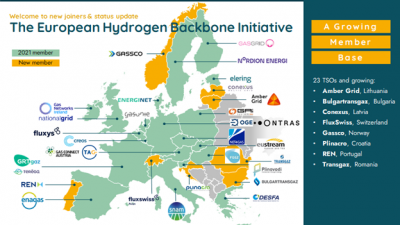European Hydrogen Backbone (EHB) consortium is happy to welcome two new chairwomen Sara Kärki and Maria Sicilia after a successful three years-long chairmanship presided by Daniel Muthmann.
The past year was highly impactful for the EHB and as 2022 comes to an end and the new year begins, so begins a new chapter in the European Hydrogen Backbone consortium. The EHB is thrilled to announce that Ms. Sara Kärki from Gasgrid Finland Oy and Ms. Maria Sicilia from Enagás will take the lead of the EHB consortium in a dual chairmanship as current chairman Daniel Muthmann has announced to step down.
The success of EHB in this past year can be summarized to many important achievements: the consortium developed leading-edge publications for hydrogen infrastructure as response to REPowerEU and engaged relevant players across the hydrogen value chain and the European Commission on the EHB Day.
The consortium is beyond grateful for the current chairman Daniel Muthmann’s steady stewardship and his persistent efforts which helped drive the success of the European Hydrogen Backbone initiative. Daniel Muthmann has been supporting and initiating the initiative in 2019, standing as a founding pillar in its three years of growth. Under his chairmanship the initiative has grown to a membership of 31 gas Transmission System Operators across Europe.
“Building entire value chains for hydrogen requires efficient cooperation of many stakeholders and confidence in the technical feasibility and commercialization. My starting point for starting this initiative was precisely that: adding important pieces to the jigsaw puzzle so that the future potential becomes visible and confidence is rising, especially with regard to the capabilities of the existing gas infrastructure to enable an upscaling of hydrogen in Europe” “I’m also very happy to welcome the new chairwomen to carry forward EHB work in the new year’s programme”
According to María Sicilia, Strategy and Planning Director at Enagás, the Spanish gas transmission system operator, “the European TSOs are called upon to play a very relevant role in achieving the decarbonisation objectives and are a clear example of cooperation and multilateralism between European countries. The next few years it will be key to making progress in the development of the European Hydrogen Backbone as a key element in advancing energy independence in Europe”.
“Hydrogen is a key technology for diversifying energy supply, improving energy security and resilience of the European energy system. European Hydrogen Backbone group has shown the possibility to react to the major changes in the energy sector with forward looking collaboration. It will be a privilege to continue the excellent EHB work together with the group and other stakeholders.” says Sara Kärki, Head of Strategic Analysis & RDI at Gasgrid Finland Oy, the Finnish gas transmission system operator.
On behalf of the consortium, we wish you happy holidays and a happy new year.
Further information:
info@gasgrid.fi
dircom@enagas.es / (+34) 91 709 93 40
For questions and inquiries about the EHB initiative, contact us at: info@ehb.eu
Gasgrid Finland Oy is a Finnish state-owned company and transmission system operator with system responsibility. We offer our customers safe, reliable, and cost-efficient transmission of gases. We actively develop our transmission platform, services, and the gas market in a customer-oriented manner to promote the carbon-neutral energy and raw material system of the future. Find out more: www.gasgrid.fi
Enagás is a TSO (Transmission System Operator) with 50 years of experience in the development, operation and maintenance of energy infrastructures. It has more than 12,000 kilometres of gas pipelines, three strategic storage facilities, eight regasification plants and operates in seven countries: Spain, the United States, Mexico, Peru, Albania, Greece and Italy. In Spain, it is the main natural gas transporter and the Technical Manager of the Gas System.
In accordance with its commitment to the energy transition, Enagás has announced that it is bringing forward its goal of becoming carbon neutral to 2040. The company is committed to the development of renewable gases (such as biomethane or green hydrogen), sustainable mobility and energy efficiency, among other areas. The company is a world leader in its sector in the main sustainability indices, as the Dow Jones Sustainability Index World, is included in the CDP Climate Change A List 2021, and has obtained the highest ESG rating in its sector in the FTSE4Good sustainability index. Find out more: www.enagas.es
The European Hydrogen Backbone (EHB) initiative has contributed to the development of a European hydrogen market through the publications of its flagship EHB maps, with a vision of a pan-European hydrogen transport infrastructure. These network maps demonstrate how this vision is both technically feasible and economically affordable, and sparked a debate on the role that a hydrogen network can play in the future European energy system. The initiative is managed by Guidehouse, a leading global provider of consulting services to the public sector and commercial markets, with broad capabilities in management, technology, and risk consulting. Find out more: www.ehb.eu

